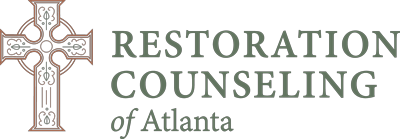LESSON 1:
Understanding Your Negative Relational Patterns and Core Beliefs
To drive a vehicle in this country you are required to submit documentation and pass an exam before you are issued a license. The paperwork identifies who you are and completion of the road test proves that you are knowledgeable behind the wheel. Why don’t we have the same standard such as competency exams for relationships? Is there a way to measure or increase proficiency in relationship to others?
Welcome to Relationship University
This series explores love, communication, spirituality, community issues, life skills, leadership, education, and service, among many other topics.
Today we will be discussing how I assess the negative relational cycles of couples. An article will follow to help couples create signposts so that they can begin to travel in the same direction together. I will maintain the analogy of a vehicle on a journey throughout this lesson. So, let’s begin by doing a basic inspection.
A Basic Understanding of Human Relationship
Humans learn how to interact with each other from our earliest years of life. We learn to navigate our physical, mental, and emotional environment with or without the support of those around us. In the family, we learn to express our needs and desires. We observe our parent’s skills or lack of communication and showing affection to each other. The way we perceive we are treated is crucial to the development of our relational patterns. Many times these patterns remain unspoken, unacknowledged, or even unrealized. They lead us to think and behave in predictable ways as a response.
We behave in certain ways to obtain what we want because we are goal-oriented. Our disappointment can point us toward what we want or feel we are lacking.
James chapter 4:1-3 reads, What causes quarrels and fights among you? Is it not this that your passions are at war within you? You desire and do not have, so you murder. And you covet and cannot obtain, so you fight and quarrel. You do not have because you do not ask. You ask and do not receive, because you ask wrongly and spend it on your passions.
Relational Patterns
We exhibit relational patterns based on our past unique experiences. They are then amplified when we enter into a relationship. When our basic needs (real and perceived) are not met, the natural response is to utilize lower orders of thinking behavior commonly referred to as fight, flight, or freeze. These behaviors are a part of our autonomic response system. This is a type of autopilot system that the body uses to regain control, remain paralyzed, and/or move from danger to safety.
In relationships, these responses are often harmful to the relationship. They typically reflect self-preservation and fear rather than cultivating trust and security with another. Building safety is the most important feature within a relationship as this provides the fertile soil for love and positive affection to grow. Without safety, acceptance, and support, there can be no intimacy. Relationships like a vehicle require a basic understanding and maintenance for them to perform optimally.
Diagnosis of Negative Relational Patterns and Core Beliefs
The Check Engine Light
A major component in the diagnosis of a healthy relationship is the emotions. They are the check engine light of the soul. Your emotions speak to a need that you have. We typically respond in negative ways when we experience disappointment from a need not being met. Feelings such as anger and frustration are usually only the canopy for deeper emotions. These include feelings like inadequacy and being a failure, or that you are not good enough or are a disappointment. Remember, these deeper emotions are often not known or unacknowledged but are key in how you make sense of and find meaning in your world.
Unrealistic Expectations
For some reason, individuals think that they are automatically going to be able to communicate well when they begin a relationship. The positive feelings associated with beginning a new relationship often overshadow the deficits in communication. When we buy a car, we experience euphoria initially before the expenses of insurance, maintenance, fuel, taxes, and eventual breakdowns take their toll.
Assessing the Problem
What’s NOT working?
In my experience, having empathy for one’s partner and their experience is often overlooked. Negative patterns of communication and miscommunication result in a misunderstanding of the inner workings of the partner’s world. These need to be understood and communicated at a heart level. Negative patterns need to be identified and unlearned. Then we need to learn and apply new healthy patterns,
What IS working?
When I meet with a couple for the first time I ask the man and woman what they enjoy about each other. Usually, everyone comes with their lists of complaints rather than honoring the other person and laying out the foundation for what they enjoy with their partner. This is similar to what would happen if you became more and more frustrated with your vehicle over time without acknowledging that it functions well enough to get you from point A to point B and back.
Navigation
It would be extremely rare for someone to get to a specific destination the first time by getting into their vehicle, and driving without appropriate navigation. If an individual wants to navigate their relational world successfully, having a map is the first place to start.
The Fear Cycle
Mapping Our Feelings
There are many tools that a therapist can use in mapping out relational patterns. I favor the Fear Cycle, which is also aptly named the ‘Crazy Cycle’ or the ‘Fera Dance.’ This activity is usually done in the second session. It initially provides a list of emotions that an individual can recognize as true for their past and present situations. For example, if you feel like you are inferior to your partner, ask yourself – is this a present-day feeling or one that you have felt throughout your life? Our emotions have memory and often what we feel today is directly linked to ways that we have always felt about ourselves in the past. When these feelings are unresolved, it is as if we are filling up the trunk of our car with baggage from the past and bringing those feelings into the present.
Steering in the Wrong Direction
In relationships, the behaviors and sentiments of others trigger us. Certain things become stimuli that serve as hot buttons for us. These things cause us to react negatively. For example, a look of disappointment from your parents, thoughts of shame after losing a job, replayed words spoken from a former lover after a breakup, or peers laughing at you as a child. Understanding these is the beginning of the discovery of our negative core beliefs.
Changing Direction
In my approach, negative core beliefs are often “I am” statements that attack our identity. Men frequently struggle and think, “I am a failure” or “I’m not good enough.” Whereas, women often resonate with “I am unloved” or “I’m alone.” These beliefs are lies and adversely impact the way that we see God, ourselves, and other people. Identification of these buttons, triggers, and negative core beliefs are the key to understanding our feelings and why we react in certain ways.
Exploration
Exploration of our negative reactions is the next stop on the journey. While the way we react might seem self-explanatory, we often fail to realize or take ownership of the level of destruction and dysfunction it is causing in the relationship. Our partners or those in the community with us tend to be aware of these behaviors, yet we persist with them. Our negative reactions cause us to skip over the wants and desires to be loved, valued, and appreciated in the way we most deeply crave. We need to get off the crazy highway and get rid of the excess baggage that is weighing us down.
How to Exit the Crazy Highway
To exit negative reaction cycles, one must first take responsibility for their known actions. Blaming others or complaining about your partner’s behavior will only continue the crazy cycle. There must be a connection made between the feelings and the behavior to understand why they are occurring. Why not do a heart assessment to understand what you are feeling and what is most important to you at the moment?
This gives insight into the “automatic,” “default,” or “subconscious” behaviors since these actions are rooted in a desired goal or response. Remember that James said our quarrels are generated from the unmet desires that we have, and I would venture to say the unexpressed desires that we have.
Map Your Course
A great way to accomplish both being understood and achieving a favorable outcome is to have a conversation about your feelings. Attach them to your wants and desires. Share this connection with your partner so that they can see where you are coming from and where you are going. I call this “signposting” which we will explore more in a later article. Having a map can ease stress and tension when it feels like you are heading in the wrong direction. With a map, you can trust that despite possible delays and detours, you will arrive safely at your destination.
If you would like to know more about negative core beliefs, the Fear Cycle, how to understand your feelings, or how to get out of these negative relational patterns, please contact a member of the team at Restoration Counseling, because someone cares about you.
Helpful resources:
Created for Connection: The”Hold Me Tight” Guide for Christian Couples by Sue Johnson
The DNA of Relationships for Couples by Greg Smalley, Robert S. Paul, and Donna K. Wallace
Crucial Conversations Tools for Talking When Stakes Are High, Second Edition by Kerry Patterson, Joseph Granny, Ron McMillan, and Al Switzler
The Seven Principles for Making Marriage Work by John Gottman
 by James E. Francis, Jr., EdD, APC
by James E. Francis, Jr., EdD, APC
james@restorationcounselingatl.com
James helps with issues such as anxiety, anger, depression, life transitions, resilience, and spiritual maturity. He believes that therapy should be clinically excellent and theologically accurate. He prioritizes the integration of Scripture with elements of psychology to operate a holistic growth model. James uses reflective prayer to help individuals align their beliefs with Scripture. He then walks beside them to promote step-by-step healing from the pain of the past. James’ goal is to hold individuals accountable through encouragement and empowerment by activating their drive toward spiritual maturity.

